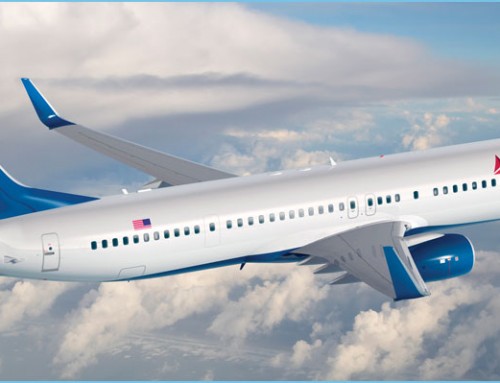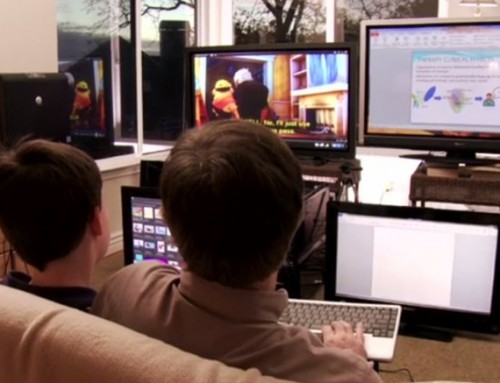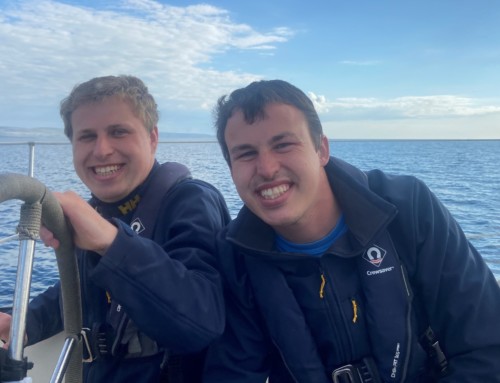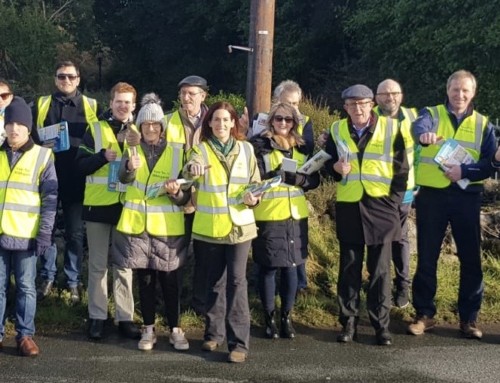Animated Language Learning
What it does: Paediatric language learning
Why it works: “As a father and as someone who has lived with the experience of autism, it was absolutely critical that we not only develop a solution, but that it could be accessible to anyone, anywhere, at a price point where they can access it. That is my mission.” – Enda Dodd, founder.
Husband and wife Enda and Valerie Dodd relocated to the San Francisco in the US in search of better clinical care for their twin sons, both of whom have autism. After three years of working with the boys’ condition in California, there was still no clear way to help them.
It was then that Enda, who has 30 years’ experience in new product and business development, decided to reach out to Silicon Valley for a more high-tech solution. He put together a multi-disciplinary product development team with leading professionals from the medical sector. Together, they developed an interventional treatment involving a new approach to language learning.
They called it Animated Language Learning (ALL). Using a state-of-the-art visual program, Dodd said that ALL had “reversed the process of language learning”.
“If you have a child who is not hearing or recognising a word, the previous methodology was to bombard the child with that word, then get the child to connect that word with the physical item,” he said.
“We start with visual imagery. Then we connect text to that image, thereby bringing that child to reading and writing or literacy. It is only when the child begins to demonstrate literacy that we go to the final stage of language development: verbal development.
“We have very sophisticated software running on Adobe servers. As the child interacts with the software on his computer, the software moulds around the child’s language learning needs based on how the child interacts with it. So it is very sophisticated.
“Our boys were the first recipients of this therapy, and their language improved dramatically at an incredible pace. So much so that my son Eoin is fully fluent in language at or above his age, and Conor has become fully literate in reading and writing, and is likely to build full verbal fluency over the next three years.”
ALL’s groundbreaking therapy uses animated media from US studio Disney/Pixar to introduce children to concrete concepts and emotional experiences.
“The biggest deficit with autistic children is socio-emotional language,” said Dodd. “You can teach simple concepts, but to teach an autistic child how to read the emotional disposition of a peer is currently impossible.
“What is unique about Pixar is that all its movies are steeped in socio-emotional language. Much of that socio-emotional language is communicated non-verbally. It is in the expressions and it is in the environment. I quickly discovered that the Pixar media was an extraordinarily powerful tool if used appropriately,” he said.
“So, in Silicon Valley, I prodded various networks and I found someone who knew Ed Catmull [co-founder and president of Pixar Animation Studios]. I had one hour to make the pitch, but he agreed to give us full and total access to its media for research purposes.”
Following the successful completion of clinical trials in the US, Enda and Valerie packed up the project and returned to Galway, a move in which Enterprise Ireland played a key role.
“The relationship with Enterprise Ireland was essential on a business level,” Dodd said. “We are talking about the Irish government here, so that was a reinforcer for Disney and Adobe. They could look and see that it wasn’t just a father with two children here, but that Ireland and the European Community were behind the project.”
ALL plans to create 17 new jobs at its Galway headquarters. “We will be taking a number of placements from NUIG’s Masters degree courses, and we are also in the process of engaging with their language pathology department with a view of hiring some of their graduates for research purposes,” Dodd said.
The technology, which has global patent protection, will be available to parents at a cost of €100 per month. Though not an insignificant amount of money, compared to other clinical treatments, Dodd maintains that ALL is reasonably priced.
“When you have a special needs child, the costs are extraordinary,” he said. “I spoke recently with a family who had just paid €20,000 for an auditory-based intervention that did not yield a result for them.
“As a father, and as someone who has lived with the experience of autism, it was absolutely critical that we not only develop a solution, but that the solution be accessible to anyone, anywhere, at a price point where they can access it. That is my mission.”
Dodd compared the ins and outs of running his new venture to his time spent working for Medtronic in Galway.
“Medtronic started some 60 years ago with the concept of a pacemaker, and then grew out that concept into a whole raft of interventions around electro-physiology. Its ability to generate revenue then created a huge ability to drive research, which then drove clinical outcomes. I want to do the same thing in this sector.”








Leave A Comment